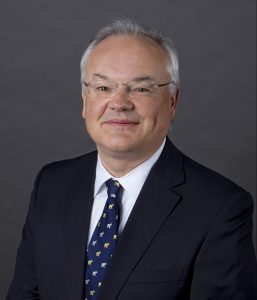
Nigel S. Key, MB, ChB, FRCP
Nigel Key, MB ChP FRCP, the Harold R. Roberts Distinguished Professor of Medicine and Pathology and director of the UNC Blood Research Center (BRC) has published important findings on the mechanism of thrombin generation induced by stored red blood cells (sRBC). In a recent study, first author Denis Noubouossie, MD, former postdoctoral fellow in the BRC, demonstrated that microvesicles released from sRBC activate the intrinsic pathway of coagulation, leading to thrombin generation. This occurs through the canonical pathway, via FXIIa-dependent activation of FIXa, as well as through a non-canonical pathway in which plasma kallikrein activates FIXa directly. This study not only demonstrates that sRBC microvesicles support FXIIa activation, but also identifies the intrinsic pathway as a potential target to prevent thrombotic and inflammatory complications after RBC transfusion. Read the article in the American Hematology Association’s Journal Blood.


Rafal Pawlinski, PhD, the Lenvil Lee Rothrock Distinguished Professor of Medicine in the division of hematology and oncology and BRC, recently published a study about the role of protease activated receptor 1 (PAR1) in microvascular stasis in sickle cell disease. First author Erica Sparkenbaugh, PhD, an assistant professor in the Blood Research Center, demonstrated that tissue factor, factor Xa, and thrombin contribute to microvascular stasis in a mouse model of sickle cell disease, and this appears to be mediated by thrombin-dependent activation of PAR1 and upregulation of p-selectin and VWF. These studies suggest that anticoagulation, or targeting PAR1, might attenuate microvascular stasis and reduce the incidence and/or severity of vaso-occlusive crisis in sickle cell patients. Read the article in the American Hematology Association’s Journal Blood.